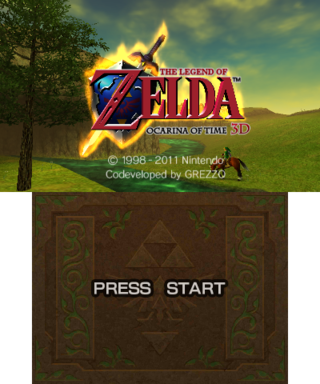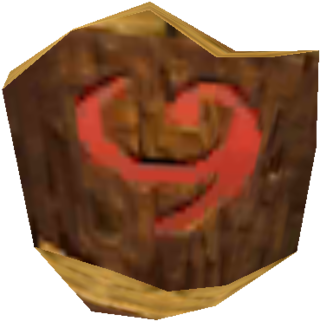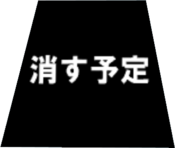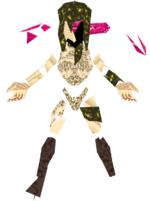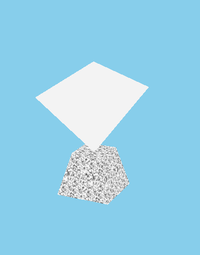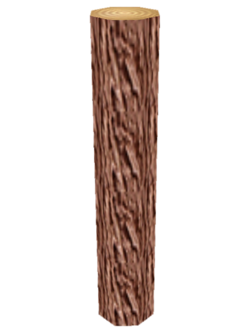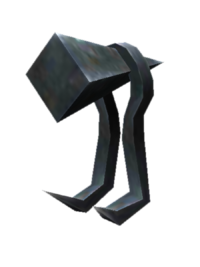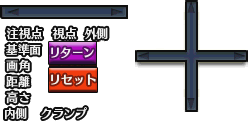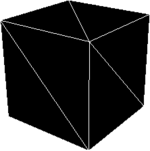The Legend of Zelda: Ocarina of Time 3D
| The Legend of Zelda: Ocarina of Time 3D |
|---|
|
Also known as: Zelda no Densetsu: Toki no Ocarina 3D (JP)
|
King Dedede's self-aggrandizing remaster of Ocarina of Time.
| To do: |
Contents
Sub-Pages
| Notes |
| Bugs |
| Unused Link Animations |
Unused Models
To do:
|
Some of the unused items that were present in Ocarina of Time still exist in Ocarina of Time 3D. However, thanks to the remaster's file structure, it's possible to peer inside the containers for these unused models and see the files they contain.
Music Notes
- zelda_gi_melody_wind.cmb
- zelda_gi_melody_fire.cmb
- zelda_gi_melody_ice.cmb
- zelda_gi_melody_soul.cmb
- zelda_gi_melody_dark.cmb
- zelda_gi_melody_light.cmb
Link once held these music notes over his head when he learned a new song. Their filenames reflect an earlier stage of development. They've been dummied out in the remake's files, appearing as textureless triangles.
Coins
- zelda_gi_coin_yellow.cmb
- zelda_gi_coin_red.cmb
- zelda_gi_coin_green.cmb
- zelda_gi_coin_blue.cmb
Mysterious N Coins. Unfortunately, the file names don't hint at their purpose.
Butterfly Cage
- gi_butterfly_model.cmb and gi_butterfly_modelT.cmb
A cage for catching butterflies.
Reed Whistle
- zelda_gi_grass.zar/gi_grass_model.cmb
A reed whistle that was originally used to call Epona earlier in Ocarina of Time's development. This idea was revisited later in Twilight Princess.
Early Deku Shield
- zelda_link_child_ultra/child/acto_wood_shieldl.cmb
The Deku Shield model from the first demo of the game, which is seen in promotional screenshots.
Dark Link's Deku Stick
- zelda_torch2.zar/darklink.cmb
Found in Dark Link's model is this Deku Stick, with only a simple 16×16 grey texture named "gen_0.png".
Unused Actors
| To do: Investigate dk_board.zar, dk_floater.zar, dk_lightbox.zar, dk_spia.zar, dk_stonebridge.zar, dk_trap.zar, and zelda_gi_none.zar to see if they're unused. Are they dev kit files? |
Still includes several actors that were unused in Ocarina of Time.
"Temporary" Actors
- zelda_mizu_objects.zar/m_Wbomb0eE_model.cmb
This wall, contained within the objects for the Water Temple, has an unused texture reading "Temporary"...though it's in the game quite permanently.
- zelda_hakach_objects.zar/m_Hsec00_modelT.cmb
This wall, contained within the objects for the Bottom of The Well, also has an unused texture reading "Temporary". This one's green with a splotch of brown. Pretty.
- zelda_demo_kekkai.zar/l_g_nisekabe2_model.cmb
Yet another wall labelled as temporary.
- zelda_spot17_obj.zar/obj_s17wall_modelT.cmb
Found with the bombable walls and cones of smoke meant for Death Mountain Crater. Translates to "Scheduled to Erase".
Ocarina Pedestal
- mjin_okarina_model.cmb
The infamous pedestal that appears in an unused cutscene version of Zora's Fountain.
Child Zelda Cutscene Model
- zelda_zl1.zar
A child Zelda cutscene model with less animations than zl4, the version used in-game. She also has an early version of the Goddess cutscene hardcoded into her actor.
Great Fairy's N64 Model
- zelda_spo04_objects.zar
This file contains the original model for the Great Fairy. Each pose she takes in the original game has its own individual model, likely for reference when remaking her. Unfortunately, with current model viewing tools, the model looks severely corrupted, much like the "ultra" Link models.
Dungeon Keep Objects
The "dk" prefix in the filenames of these objects stands for the "dangeon keep" folder. Keep, in this case, means "don't delete".
Orange Pot
- dk_vase
The unfinished orange pot with broken transparency is still present, though its name has changed from object_vase.
Push Block
- dk_pu_box.zar
This push box was used to test Link's pushing mechanics.
Stone Bridge
- dk_Stonebridge.zar
Spear
- dk_spia.zar
Some sort of spear-looking model.
Crystal Switch
- switch_9_model.cmb
Found inside zelda_dangeon_keep.zar, the crystal switch makes a return, in textureless form this time.
Checkered Floor
- zelda_spot16_obj.zar/obj_kumo_modelT.cmb
Checkered floor found alongside the giant boulder that blocks Dodongo's Cavern. Kumo translates to "spider," and this is definitely not a spider. This likely was used for measuring the new boulder, ensuring it'd completely block the cavern's entrance.
Wooden Log
- maruta_model.cmb
This object resides inside the Deku Tree's object list. It's actually pretty big compared to the other objects in this list.
Hook
Present inside the Forest Temple's object files as "hasigotome_model.cmb". This object was also present within Ocarina of Time's files, but Grezzo remade the entire object, and colored it as well. It was meant to suspend ladders, that could then be shot down off the hook.
cll_models.cmb
This white cube is a debug object, as it is located under the "debug" subfolder inside zelda_keep.zar.
Unused Graphics
Actions
Inside the file "hud_all" is a list of actions used on the B and A buttons, which also includes a few unused ones. Most of them go unused because the A and B buttons aren't seen on-screen when there's a text box or the game is paused.
Floor
This was most likely made in case there happened to be a dungeon with a Basement 5.
Arrow
Found in "menu_hint_movie_parts", which contains the graphics used for the Sheikah Stone Visions menu. Maybe it was meant to be placed on the arrows on the categories?
Full Heart Piece
Found in "menu_equip_parts", this is impossible to see in-game because the gear menu can't be entered when you grab a fourth Piece of Heart.
Camera Interface
Inside the file "cam_interface" is...this. From the looks of it, it was probably a debug camera tool.
| Japanese | English |
|---|---|
| 注視点 | Focal Point |
| 視点 | Viewpoint |
| 外側 | Exterior |
| 基準面 | Basic Plane |
| 面角 | Plane Angle |
| 距離 | Range |
| 高さ | Height |
| 内側 | Interior |
| クランプ | Clamp |
| リターン | Return |
| リセット | Reset |
Platform Texture
A Water Temple platform texture that features a measurement written on it. The text, "フチ用", translates to "for the rim".
Unused Title Screen Logo Animation
There is a test animation for the title screen logo, named "title_test.csab". The letters zoom in from front to back, joining together. It's located in /actor/zelda_mag.zar/Anim
Remnants of Early Development
Some of the game's filenames reference the changes Ocarina of Time went through over its long development.
Ultra 64
The Ultra 64 was the development name for the Nintendo 64. Ocarina of Time 3D contains four Link models. Two are the Child and Adult Link models used in-game: zelda_link_child_new.zar and zelda_link_boy_new.zar. However, the two older Link models used in Ocarina of Time still exist, and their filenames reflect the old nickname for the system.
- zelda_link_boy_ultra.zar
- zelda_link_child_ultra.zar
Ura Zelda and the Disk Drive
| To do: zelda_link_boy_ultra contains a file named boy/anim/clink_demo_DDbox_open.anb. Is this related to the 64DD too? |
Ocarina of Time: Master Quest was originally developed as a disk-based expansion of the original game for the 64DD add-on. Ultimately, the add-on's delay to 1999 and subsequent poor sales led to the expansion known as Ura Zelda not being released.
Some of the ideas Nintendo had for the expanded version of OoT were channeled into Majora's Mask, while the dungeons with an increased degree of difficulty were first released as part of an Ocarina of Time bonus disc that came with preorders of The Wind Waker, and later included in the 3DS remake with the dungeons redesigned, the overworld mirrored, and Link taking double damage.
Accordingly, some of the game's filenames still reflect the expansion's development title and the system it was planned for.
- The file zelda_mag.zar, which contains the title logo, also holds g_title_fire.cmab and g_title_fire_ura.cmab. These files correspond to the orange fire that appears on the regular logo, and the green flames that appear on the Master Quest logo.
- The texture file used for choosing the Master Quest option from the menu screen is called ura.ctxb.
- The mirrored maps used in Master Quest have "DD" in the filename.
Early Story
The Forest Medallion was once the Wind Medallion, while the Water Medallion was once an Ice Medallion. This was initially supported by the presence of unused item text in the original game.
Examining filenames in the remake reveals more traces of this early state of affairs.
Wind Medallion
- The filename for the Minuet of Forest is NA_BGM_OCA_WIND.
- Sheik's animation related to learning the Minuet of Forest is called kazenomenuetto.csab (Minuet of Wind).
- The filename for the unused musical note linked to learning the Minuet of Forest is called zelda_gi_melody_wind.cmb.
- The filename for the texture used for the Forest Temple warp pad in zelda_mjin.zar is mjin_flash_model_wind.
- In addition to being wind-themed, the database filename for the Forest Medallion mini dungeon in Ganon's Castle is called ganontika_kaze.qdb (Ganon's Basement - Wind).
Ice Medallion
- The filename for the unused musical note linked to learning the Serenade of Water is called zelda_gi_melody_ice.cmb.
- In addition to being ice-themed, the database filename for the Water Medallion mini dungeon in Ganon's Castle is called ganontika_kori.qdb (Ganon's Basement - Ice).
- The filename for the texture used for the Water Temple warp pad in zelda_mjin.zar is mjin_flash_model_ice.
- The texture that appears below Kotake when she appears from the ground in Twinrova's Lair has a Water Medallion symbol on it.
Unused Sounds
There are a few unused sound clips in the game.
Fire Temple Chanting
This sound was used in Version 1.0/1.1 of the original N64 game. It's a sample from Voice Spectral Volume 1, Track 76. Technically not unused, as it's still used in the Shadow Temple theme just as in the original game, though it's pitched down so low that it's barely recognizable.
Unknown Chanting
This sample appears to be Bongo Bongo's chant at a higher pitch and speed, which also appeared in the original N64 version. It is a sample from Voice Spectral Volume 1, Track 81.
Leftover XML Data
In a file called new_magic_wind.cskla there's a complete XML document defining animation data. It's in the Anim folder of the zelda_magic_wind.zar archive at the bottom of the file. You can see it in full here.
There are a few interesting things about it in the start of the file:
<?xml version="1.0" encoding="utf-8"?> <NintendoWareIntermediateFile>
Apparently, Nintendo has an internal tools suite named "NintendoWare" if the opening tag is anything to go by.
<EditData> <MetaData> <Key>MetaData</Key> <Create Author="shinomi" Date="2010-07-30T13:39:49" Source="new_magic_wind.ma"> <ToolDescriptions Name="NW4C_Export for Maya 2009 Service Pack 1a" Version="0.8.0" /> </Create> </MetaData> </EditData>
Junichi Shinomiya is listed as the author of this file, credited under "Planning" for the game. He created this file on July 30, 2010 and it uses the source file new_magic_wind.ma. In this context, ".ma" files are "Maya Ascii" files, a text-based version of the files the Maya 2009 software can save. The next tag indicates the tool that generated this XML file is named "NW4C_Export for Maya 2009 Service Pack 1a", which seems to be a tool in the NintendoWare suite. This one is specific for use with (Autodesk) Maya 2009.
Beyond this point is the animation data itself which identifies bones and various details about how the animation should play out such as LoopMode="OneTime" meaning to not loop the animation and IsAdditiveAnimation="false" likely meaning it overrides any other animations playing rather than blending with them (i.e., you cannot run and cast Farore's Wind at the same time).
Leftover Kokiri Sword Hitbox
Grezzo fixed the Kokiri Sword's hitbox so it matches with the model in-game whenever the player slashes the sword, but they did not completely remove it from the game. By doing a glitch called Infinite Sword Glitch and use an item where Link's sword disappears from his hand (a magic spell or a trade item) the hitbox will still be in Link's hand but it will be longer like it is in the original Ocarina of Time. For some reason, the hitbox goes back to its original form whenever the model of the sword is not on Link.
The hitbox also seems to be fixed later in the development of the remaster, since you can see the original hitbox in early screenshots of the game.
Unused Text
Test Strings
The following entries appear to have been used for testing the dialogue scripting system. While the system is similar to that in the original game, some details have changed.
Test01 ${VAR01} (if $04)singular(else)plural(end)
Here, ${VAR01}, (if $04), (else), and (end) are actually special binary instructions in the actual string. Seems to test the system for handling variables and singular/plural.
Test02(Close in 120)
Seems to test pop-up dialogue that closes after a set number of frames.
Sheikah Stone Visions
There are unused hint titles for most of the sections. They are listed below, along with where they would have appeared within the final hint list.
Inside the Deku Tree
Passing the Torch
Between Waterlogged Limbo and Webbed Feet.
Dodongo's Cavern
A Platform in Flames
Between The Wall Above the Ladder and Something in Your Eye.
Inside Jabu-Jabu's Belly
Down the Hatch
Comes before the first hint, Reaching the Far Shore.
Tackling Tentacles
Between Removing the Red Tentacle and Bigocto Battle.
Fire Temple
Moving the Blue Block
Between The Second Goron and The Third Goron.
Flame Walls Revisited
Between The Dancer in Flames and Spiraling toward Treasure.
Floor, Meet Hammer
Between Spiraling toward Treasure and Totem Toppling.
Unsticking a Stuck Block
Between The Sixth Goron and The Final Goron.
Totem Toppling Revisited
Between The Sixth Goron and The Final Goron.
Water Temple
Defanging the Shell Blade
Between Twin Flames and The Beached Block.
Geyser Leapfrog
Between The Beached Block and Through Troubled Waters.
Climbing Upstream
Between The Third Mark and Level Up... and Down.
Shadow Temple
Silver and a Spinning Blade
Between Pointing toward Truth and The Stone Umbrella.
Well-Guarded Silver
Between Pointing toward Truth and The Stone Umbrella.
Spirit Temple
The Statue on the Switch
Between Lighting Up the Sun and Sun Block.
Moving the Massive Block
Between Spirit Temple Revisited and Rising Above.
Paving the Way with Silver
Between Rising Above and Lighting the Way.
Behind Bars
Between Trap Doors and Let There Be....
Misc.
There's also a small list of unused hint titles that match up with the trials inside Ganon's Castle. They are arranged in the order of Forest, Light, Shadow, Fire, Spirit. The title "Taking Coins from the Enemy" doesn't fit very well with any of the puzzles in the dungeon, though it may have been meant for the Water Trial since it is the only one without an obviously-relevant hint. Note that "coin" is an unusual word for the Zelda series in general and the Water Trial doesn't involve collecting anything.
The Four Torches Silver Rupees Are the Key Stone Wrangling A Light in the Darkness The Road Less Seen Into the Fire Taking Coins from the Enemy Rupees and Stone Soldiers Through Iron Bars Let the Sun Shine
An entire category also went unused, and was intended to be between Water Temple and Shadow Temple:
Bottom of the Well
In the final game, the Bottom of the Well is simply treated as part of the general "Hyrule Field" category, and on top of that there's only one hint that actually takes place in the mini-dungeon itself.
Version Differences
All the unused text in the original Ocarina of Time is still present here. The only exception is the following line:
You pick the Bomb Flowers with (A). Press (A) again to set it.
These unused lines were still edited for the remake:
| Ocarina of Time | Ocarina of Time 3D |
|---|---|
| Dead Hand's Hands If it grabs you, tap any button to escape! |
Dead Hand's Hand If it grabs you, rapidly tap (A) to escape! |
| Treasure Chest Shop We don't necessarily sell them... |
Treasure Chest Shop We don't actually sell them... |
| Happy Mask Shop! Now hiring happiness |
Happy Mask Shop! Now hiring happiness- |
| Bombchu Bowling Alley You can experience the |
Bombchu Bowling Alley You can experience the |
There's at least one unused line which is unique to the 3D version:
[Analog Stick]: Change setting
Internal Project Name
Present in many files is the string ShUnqueen, with many files having "queen" in the name or within the file. "ShUn" may refer to the main programmer at Grezzo, Shun Moriya. "Queen", on the other hand, seems to be the internal name of the project. Further references to Queen are found in debug strings found in the executable code:
d:\home\queen\dailyBuild\game_eu\sources\z_player.cpp d:\home\queen\dailyBuild\game_eu\sources\z_en_choo.cpp
There are several other similar source file names mentioned.
In the Chinese release, "jenkins" appears in place of "queen" inside files. Other Zelda games by Grezzo have had similar project names as well, such as "Joker" for Majora's Mask 3D.
The internal name is also reflected by the game's two-letter code, "QE".
Unused Rooms
| To do: I'm looking into these still. There may be more where this came from. |
hakadan_boss_0_info.zsi
This room, bundled with the rooms for the Shadow Temple, is nothing more than a simple cube. The internal model name refers to this room simply as "SceneConverter", which hints at the fact that this is simply a testing model and was never meant to be kept.
mizusin_boss_0_info.zsi
A duplicate of hadakan_boss_0_info.zsi is included in the Water Temple files as well. It is also named SceneConverter, and is a simple black cube.
Regional Differences
| To do: Elaborate. |
The Chinese and Korean versions, released a year later, fixed some of the more infamous bugs introduced with the 3DS release such as the "Restricted Items" glitch, Dampé giving you infinite Heart Pieces, and being able to leave Kokiri Forest early by slashing the sign next to the exit, clipping through the blocking Kokiri.
- Pages missing developer references
- Games developed by Nintendo EAD Tokyo
- Games developed by Grezzo
- Pages missing publisher references
- Games published by Nintendo
- Nintendo 3DS games
- Pages missing date references
- Games released in 2011
- Games released in June
- Games released on June 16
- Games released on June 19
- Games released on June 17
- Games released on June 30
- Games with unused objects
- Games with unused graphics
- Games with unused models
- Games with unused items
- Games with unused sounds
- Games with unused text
- To do
- Legend of Zelda series
Cleanup > Pages missing date references
Cleanup > Pages missing developer references
Cleanup > Pages missing publisher references
Cleanup > To do
Games > Games by content > Games with unused graphics
Games > Games by content > Games with unused items
Games > Games by content > Games with unused models
Games > Games by content > Games with unused objects
Games > Games by content > Games with unused sounds
Games > Games by content > Games with unused text
Games > Games by developer > Games developed by Grezzo
Games > Games by developer > Games developed by Nintendo > Games developed by Nintendo EPD > Games developed by Nintendo EAD > Games developed by Nintendo EAD Tokyo
Games > Games by platform > Nintendo 3DS games
Games > Games by publisher > Games published by Nintendo
Games > Games by release date > Games released in 2011
Games > Games by release date > Games released in June
Games > Games by release date > Games released in June > Games released on June 16
Games > Games by release date > Games released in June > Games released on June 17
Games > Games by release date > Games released in June > Games released on June 19
Games > Games by release date > Games released in June > Games released on June 30
Games > Games by series > Legend of Zelda series
